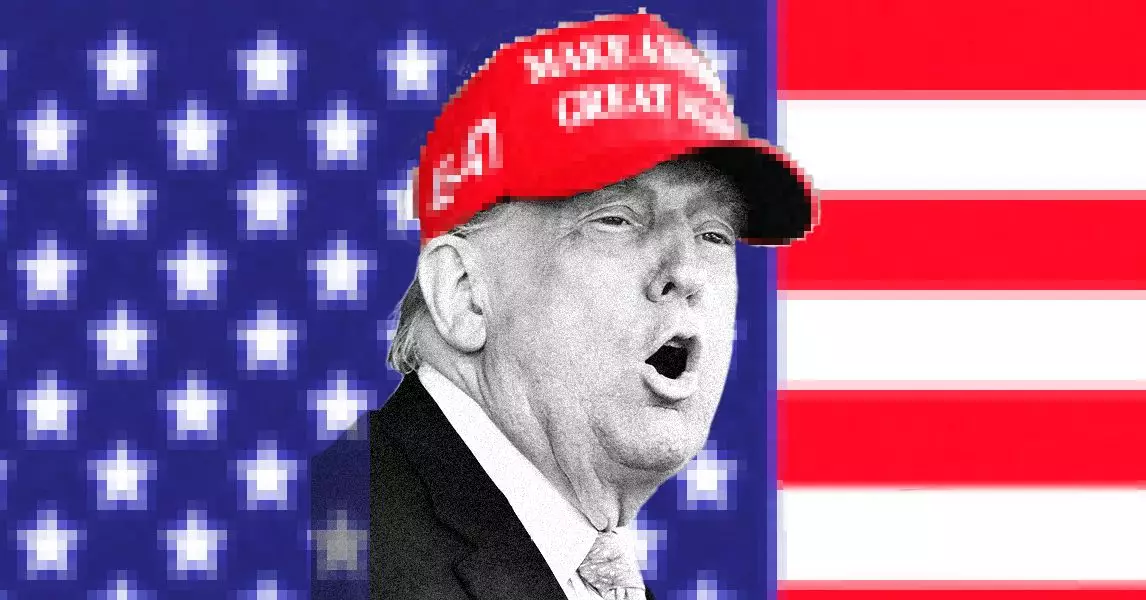The recent unveiling of the Trump Administration’s comprehensive AI strategy marks a pivotal point in America’s technological race with China. Touted as a blueprint for maintaining national supremacy in artificial intelligence, this initiative reflects a bold assertion that regulatory constraints must be loosened to accelerate innovation. Instead of tame oversight, it champions a free-flowing environment where corporate giants and startups alike can push boundaries without the stifling grip of bureaucratic red tape. The emphasis on minimal regulation is rooted in the belief that AI’s true potential can only be unlocked through daredevil experimentation and rapid deployment. While critics might argue that this approach risks unchecked risks, proponents contend that overregulation would inhibit American ingenuity — the cornerstone of our competitive edge.
This strategic pivot signifies a departure from the cautious, risk-averse policies of previous administrations, especially the Biden administration’s recent attempts to curtail AI excesses. By advocating for a reduction of bureaucratic hurdles, the plan echoes a clear message: America’s future in AI relies on unbridled innovation. It heralds an era where U.S. companies could potentially operate with fewer constraints, allowing Silicon Valley to once again spearhead technological breakthroughs that shape global markets and influence everyday life.
Building a Fortress of Infrastructure and Power
Beyond deregulation, the plan underscores the necessity of robust infrastructure to sustain the burgeoning AI ecosystem. The call to “build, baby, build” encapsulates a conviction that the United States must establish vast data centers, advanced neural networks, and reliable energy sources capable of powering these AI engines. This ambition is intertwined with the administration’s stance on energy policy — rejecting climate dogma that might hinder infrastructure development. Critics might argue that this neglects environmental stewardship in favor of technological dominance, but the administration’s narrative suggests that America’s supremacy hinges on relentless infrastructure expansion.
The focus on infrastructure also encompasses international diplomacy and security, recognizing that AI isn’t merely an economic instrument but a strategic asset. By positioning itself as a leader in AI diplomacy, the U.S. aims to craft global standards, shape norms, and counter Chinese advancements. The plan implicitly acknowledges that AI technology is a double-edged sword—capable of both innovation and destruction—and that American leadership must extend beyond the labs into the diplomatic arena.
The Political Undertones: Winning the Race at All Costs
Driving this strategy is a clear narrative of competition—an emphasis on winning the global AI race against China. White House officials, including AI czar David Sacks, frame AI development as a national contest where stagnation or overregulation could hand China the advantage. This zero-sum mentality positions technological supremacy as essential for maintaining America’s geopolitical power.
The plan also reflects a broader ideological stance—fighting against what it perceives as “woke” bias embedded in AI systems. By proposing that federal procurement prioritize companies whose systems are objective and free from ideological influence, the administration endeavors to shape an AI landscape aligned with traditional American values. This stance hints at a broader cultural battle over the role and tone of AI in society, aiming to prevent it from being co-opted for ideological censorship or social engineering.
However, the aggressive push for deregulation and infrastructure development might overlook potential pitfalls. The absence of stringent oversight raises questions about safety, ethics, and the long-term societal impacts of such an unregulated AI surge. The reliance on private sector innovation, while fostering rapid progress, also risks widening inequalities and amplifying cyber vulnerabilities. Moreover, ignoring environmental concerns in favor of speed and power could generate ripple effects detrimental to future sustainability.
In sum, this strategy boldly fosters a vision where the United States leads an AI revolution with no compromises—fueling innovation, asserting dominance, and shaping the future in America’s image. Whether this approach will ultimately sustain America’s position on the global stage or sow the seeds of unforeseen chaos remains an open question.


Leave a Reply